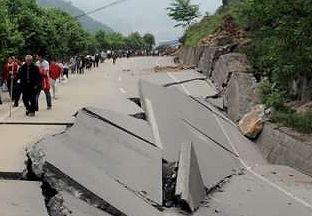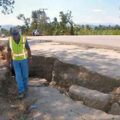
In the same vein as the SETI@home project, the Quake Catcher Network (QCN) aims to operate a massive seismic event detection network using the sudden-motion sensors that are incorporated into laptop computers. These small accelerometer chips are designed to protect the delicate moving parts of your hard disk from sudden jolts, but it turns out that they also make pretty good seismic sensors – particularly if you mesh thousands, or tens-of-thousands, of them into a network. The large network also means that the signals from lots of sensors can be compared, making it easy to filter out more mundane sources of laptop vibrations, such as typing.
This cheap and cheerful approach is now starting to gain acceptance, with around 1500 laptops connected in a network that has already detected several tremors, including a magnitude 5.4 quake in Los Angeles in July. Led by Elizabeth Cochran at the University of California, Riverside, and Jesse Lawrence at Stanford University, the QCN uses the same software platform for volunteer computing that projects like SETI@home rely on.
Interestingly, the beginnings of the project lie with a hacker group called the teenage mutant ninjas, who in 2005 figured out how to access the sudden motion sensor in Apple computers. UC’s Cochran had the idea that this approach could be linked into a SETI-like network and a first limited release was made in March of this year, and by April the network had already detected its first quake, in Nevada.
The team is now working on integrating stand-alone sensors that attach to desktop machines with USB connections (since desktops don’t get bumped around like laptops, they don’t have built-in sensors). “The USB accelerometers can also mount directly to the floor, which means they will have better sensitivity to ground motions,” explained Lawrence.
Related:
Scientists Mull Earthquake Love Waves
Under Pressure: Earth Science


















Comments are closed.